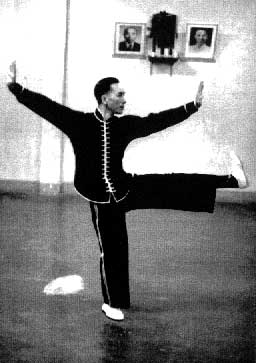Northern Shaolin
One of the most famous and best known Northern Shaolin styles was created from techniques developed inside the Shaolin Buddhist Monastery.

Founded in 495, by Emperor Xiao Wen (471 to 500), the Shaolin Monastery was built very close to a forest (Shao=young; Lin=forest), at the foot of Song mountain, in the Henan province, between the cities of Zhengzhou and Luoyang (ancient capital of the Chinese empire), to the north of the Yellow River (Huang He).
The first abbot was an Indian monk called Badhra (Batuo). The only purpose of the Shaolin monastery was to turn it into the most important center for study, development and teaching of Buddhism throughout Asia. Also considered to be a center for pilgrimage, the Shaolin monastery received Buddhist monks from all over Asia (India, Ceylon, and Persia).
There are many legends concerning the Shaolin monastery and Chinese martial arts. The best known one tells of the passage of the monk, Bodhidharma (Damo), the twenty–eighth patriarch of Mahayana Buddhism (Great vehicle) and the first patriarch of Chan (Zen) Buddhism. Bodhidharma was born in Ceylon and was of a noble family. He converted to Buddhism and later became a student of Prajnatara. Bodhidharma arrived in China in 475, made a pilgrimage through various temples to the South and retired to the Shaolin monastery, around the year 520, to be the substitute of the monastery's abbot at that time, Bodhiruci.
Bodhidharma taught the Shaolin monks the first breathing exercises to increase physical resistance and concentration necessary for the long periods of meditation. Some state that these exercises, later on combined with the combat techniques practiced in the region, would be the starting point of the first forms of Shaolin martial arts.
After years and years of history, the Shaolin monks learned techniques for corporal combat and weapons, and developed their own techniques, which made them well known and feared. The teachings were reserved for the monks, but in 1650, the abbot at that time, Chiu Jin, permitted that laymen learned some styles reserved for the monks. One of the first of these laymen was Kan Fon Si, who later became a hero in Chinese history – for his fight against the oppression of the Qing. The Gan Fenchi martial art legacy went through four generations until reaching Ku Yu Cheong, who learned the techniques of the Shaolin with his father's friend. Ku Yu Cheong became famous for his "iron–palm" technique and began as an instructor at the Nanking Central Academy in 1928. There he learned Tai Chi Chuan, Pa Ki and the Wudang sword from Li Kin Lam, and Pa Kua and Xing Yi from Sun Lu Tang.
Later, Ku Yu Cheong was invited to represent the Central Academy in Canton along with other famous masters. Afterwards, he opened his own school and gave it the name of "Northern Shaolin" to the techniques he taught there. The explanation for the name was that the style brought together only the best styles of the North of China, such as: "The Ten Shaolin Routines", Tai Chi, Pa Kua, Xing Yi, Tan Tui, Cha Quan, weapons and the chikung "Little golden bell".
Ku Yu Cheong had several students, one of these students, Yim Sheung Mo, stood out considerably. Yim Sheung Mo trained directly with Ku Yu Cheong and was able to learn Lo Hap and Chi Yi Mun (Zi Ran Men) with Mong Lai Sin. Yim Sheung Mo resided until the end of his life in Hong Kong, where he taught many students. Chan Kowk Wai was one of his most outstanding representatives of the Northern Shaolin style.
The main style, "The Ten Shaolin Routines", is divided in forms of the hands and weapons, totaling ten forms of the hands and over twenty five different weapons, each one with, approximately, one or two forms. The characteristics that define the style are the long and short attacks, with the hands and mainly the feet, elbows, sweeps and throws. The strength and technique used in the movements denote its efficiency, and the style is considered to be the most complete of all in Chinese martial art.
 Founded in 495, by Emperor Xiao Wen (471 to 500), the Shaolin Monastery was built very close to a forest (Shao=young; Lin=forest), at the foot of Song mountain, in the Henan province, between the cities of Zhengzhou and Luoyang (ancient capital of the Chinese empire), to the north of the Yellow River (Huang He).
Founded in 495, by Emperor Xiao Wen (471 to 500), the Shaolin Monastery was built very close to a forest (Shao=young; Lin=forest), at the foot of Song mountain, in the Henan province, between the cities of Zhengzhou and Luoyang (ancient capital of the Chinese empire), to the north of the Yellow River (Huang He).